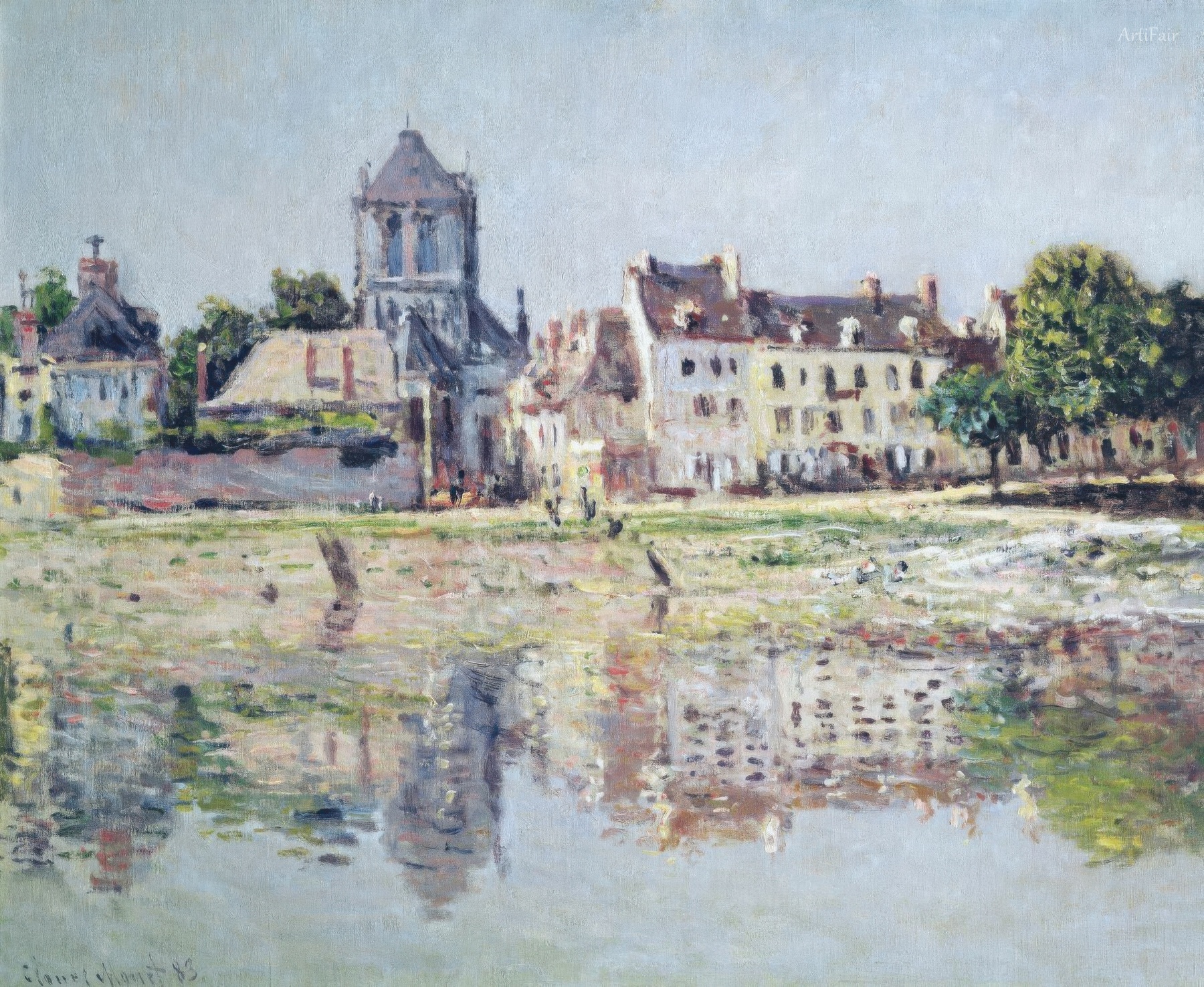
Art Appreciation
In this serene landscape, the gentle flow of the river reflects the soft, dappled hues of the buildings and nature surrounding it. The house facades, drenched in warm yellows and muted whites, suggest a quiet day by the water, where the essence of life ebbs and flows, much like the surface of the river catching the sunlight. The church tower stands prominently, its architectural features softened by Monet's brushwork; it feels less like an intrusion and more of a gentle companion to the tranquil scene. You can almost hear the whisper of the breeze and the soft lapping of water against the riverbank as one immerses themselves in this tableau of harmony.
Monet’s technique, so characteristic of Impressionism, employs delicate brush strokes that gesture towards reality without defining it too rigidly—there’s a fluidity that invites the viewer into its world. The color palette harmonizes cool blues with warm earth tones, creating a lively contrast that energizes the canvas. With each glance, you might find new reflections or elements hidden in the shadows near the waterline. This scene exudes a sense of nostalgia, a longing for a simpler time, where the basic rhythms of nature seemed to determine the pace of life. The painting, created during the Impressionist movement around the late 19th century, highlights Monet's fascination with light, color, and the ephemeral qualities of both, marking its significance in art history as a timeless celebration of nature's beauty.